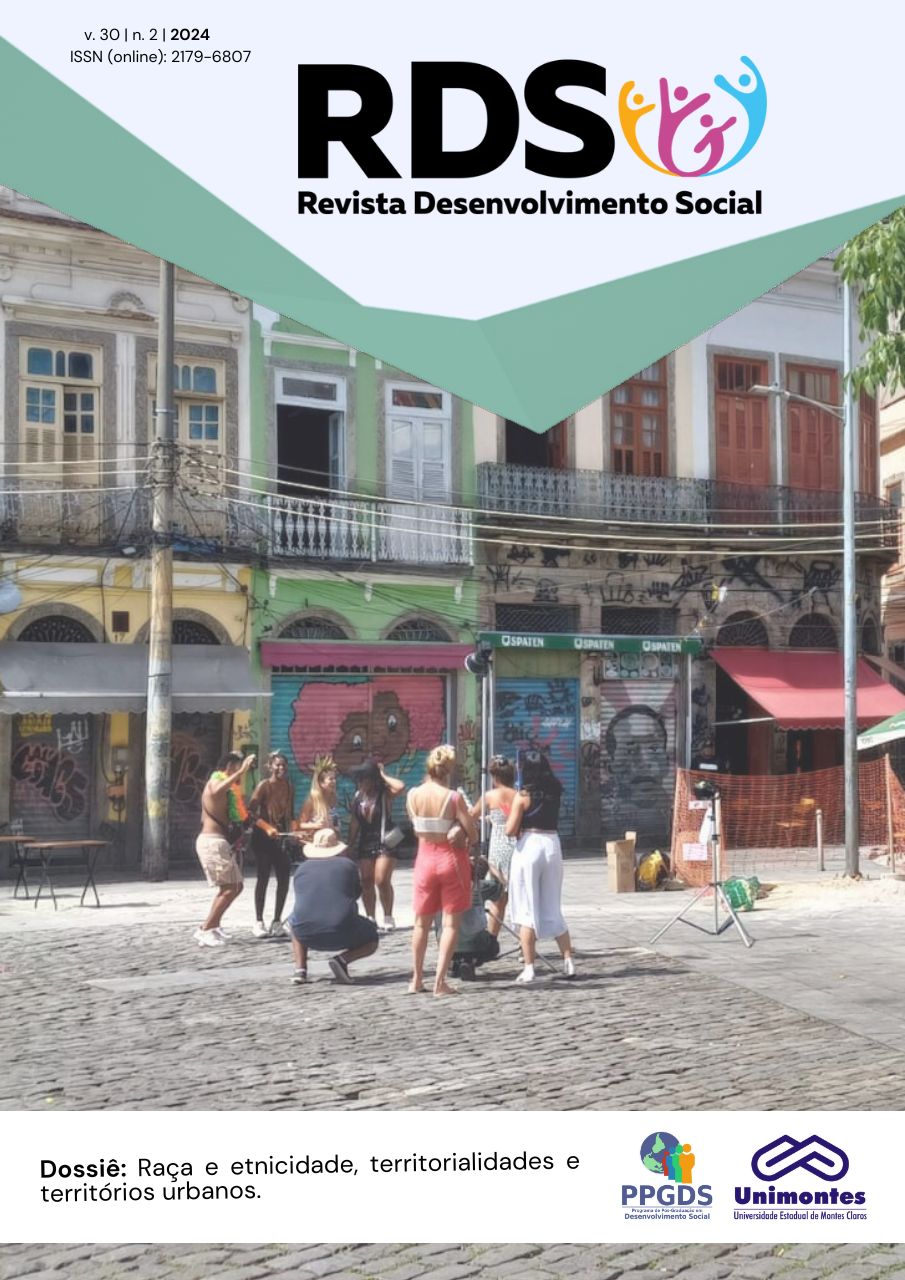SLOW VIOLENCE ABOUT URBAN-RIVERSIDE POPULATIONS: THE CASE OF THE LEITÃO STREAM IN BELO HORIZONTE-MG (1894-1975)
SLOW VIOLENCE ABOUT URBAN-RIVERSIDE POPULATIONS: THE CASE OF THE LEITÃO STREAM IN BELO HORIZONTE-MG (1894-1975)
DOI:
10.46551/issn2179-6807v30n2p179-195Keywords:
Belo Horizonte., Violência Lenta., Meio Ambiente., Geografia Urbana, Comunidade.Abstract
The article analyses, based on Rob Nixon's concept of "slow violence", some of the processes that led to the expulsion of the riverside population from the Leitão stream valley in Belo Horizonte between 1894 and 1975. The insertion of the watercourse into the planned layout of the city, which took place during the process of urban evolution of the capital of Minas Gerais, not only led to the removal of the residents from the river lands, but also resulted in profound landscape and ecosystem changes, in which the press and public authorities played a major role in the strategies of social persuasion for the realization of the interventions. From the perspective of Slow Violence, it can be seen that poor environmental management and the forced rupture between the population and the watercourse based on values imposed on society throughout the 20th century have contributed to the erasure of part of the memories of the people who inhabited the valley before the processes that led to their expulsion, and today the land in the valley is among the most highly valued in the city of Belo Horizonte.
Downloads
References
AGUIAR, Tito Flávio Rodrigues. Vastos Subúrbios da Nova Capital: formação do espaço urbano na primeira periferia de Belo Horizonte. 2006. 443 f. Tese (Doutorado em História) - Universidade Federal de Minas Gerais, Belo Horizonte, 2006.
BERTH, Joice. Se a cidade fosse nossa: racismos, falocentrismos e opressões nas cidades. 1 ed. – Rio de Janeiro; Paz e Terra, 2023. 288p.
BORSAGLI, Alessandro. Rios Invisíveis da Metrópole Mineira. Belo Horizonte: Clube de Autores, 2016. 430p.
________, Alessandro. Sob a sombra do Curral del Rey: contribuições para a história de Belo Horizonte. Belo Horizonte: Clube de Autores, 2017. 452p.
COSTA, Maria Clélia Lustosa. O discurso higienista definindo a cidade. Mercator – Fortaleza, v. 12, n. 29, p. 51-67, set./dez. 2013.
DIAS, Francisco Martins. Traços históricos e descritivos de Belo Horizonte. Belo Horizonte, 1897.
FILGUEIRA, André Luiz de Souza. Racismo ambiental, cidadania e biopolítica: considerações gerais em torno de espacialidades racializadas. Ateliê Geográfico - Goiânia-GO, v. 15, n. 2, ago. 2021, p. 186 – 201.
GROSTEIN, Marta Dora. Metrópole e expansão urbana: a persistência de processos "insustentáveis". São Paulo em Perspectiva, v. 15, n. 1, p. 13–19, jan. 2001.
HERCULANO, Selene. O clamor por justiça ambiental e contra o racismo ambiental. Revista de Gestão Integrada em Saúde do Trabalho e Meio Ambiente; v. 3, n. 1, Artigo 2, jan./abril 2008.
LEAL, Fábio Nunes. O arraial do Bello Horizonte. In: Minas Geraes, 1894, 16p.
NIXON, Rob. Slow Violence and the Environmentalism of the Poor. Cambridge: Harvard University Press, 2011.
PACHECO, Tania. Desigualdade, injustiça ambiental e racismo: uma luta que transcende a cor. 2006. Disponível em:. Acesso em 19 mar. 2024.
PEREIRA, Josemeire Alves. O tombamento do Casarão da Barragem e as representações da favela em Belo Horizonte. Mestrado em História. Universidade Estadual de Campinas, 2012.
SOARES, Rodrigo Goyena. Estratificação profissional, desigualdade econômica e classes sociais na crise do império. Notas preliminares sobre as classes imperiais. Topoi, Rio de Janeiro, v. 20, n. 41, p. 446-489, maio/ago. 2019.
Published
Métricas
Visualizações do artigo: 95
How to Cite
Issue
Section
Categories
License
Copyright (c) 2025 Alessandro Borsagli, Brenda Melo Bernardes, Amaro Sérgio Marques

This work is licensed under a Creative Commons Attribution-NonCommercial-NoDerivatives 4.0 International License.
Esta licença permite que outros(as) façam download do trabalho e o compartilhe desde que atribuam crédito ao autor(a), mas sem que possam alterá-lo de nenhuma forma ou utilizá-lo para fins comerciais.












.png)
.png)




.png)









